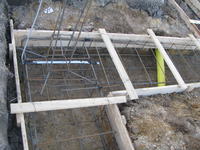Electrical installers in the house (shell) connected the earth electrode from under the fuse box to the lightning strip, which goes into the ground.
Is it normal and safe? What is the potential PE that will also appear in the lightning protection system on the roof, or maybe it will fly into the ground because it will be closer to it?
Shouldn't the earth electrode go on a separate hoop?
Will the lightning strike the lightning strike fly into the house through the PE conductor connected to the lightning protection system?
Is it normal and safe? What is the potential PE that will also appear in the lightning protection system on the roof, or maybe it will fly into the ground because it will be closer to it?
Shouldn't the earth electrode go on a separate hoop?
Will the lightning strike the lightning strike fly into the house through the PE conductor connected to the lightning protection system?



